When gardeners refer to August their descriptions are unlikely to be favorable. The “dog days”, and worse, characterize the most troublesome part of the growing season when the heat of summer has taken its toll. Spring is vibrant, full of yellows, reds, and blues, but August is dusty and brown at the edges, the gardener supposes.
I’ve had the good fortune to have adequate space, and a determination to have a garden that doesn’t fade late in the summer. I am only slightly discouraged that the lawn is struggling and infested with a variety of weeds, but there are flowers and other ornaments that are as delightful (if not so numerous) as any that spring will offer.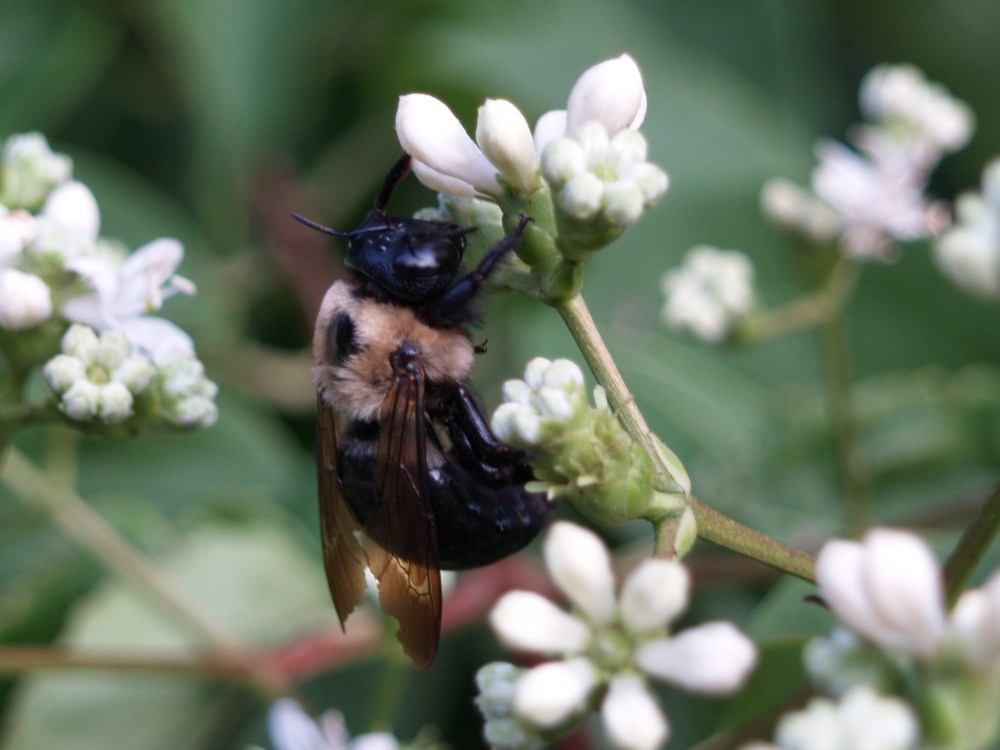
While the spring garden is a riot of blooming cherries, dogwoods, and redbuds, in August the crapemyrtles remain fully in bloom, the Franklin Tree (Franklinia alatamaha) is at its peak, and the Seven Son Tree (Heptacodium miconioides, above) is nearly in full flower. Butterflies and bees swarm to the tree on a warm August afternoon, darting between blooms, and with their fill of nectar move on to the Franklin Tree, and then perhaps to the caryopteris (below).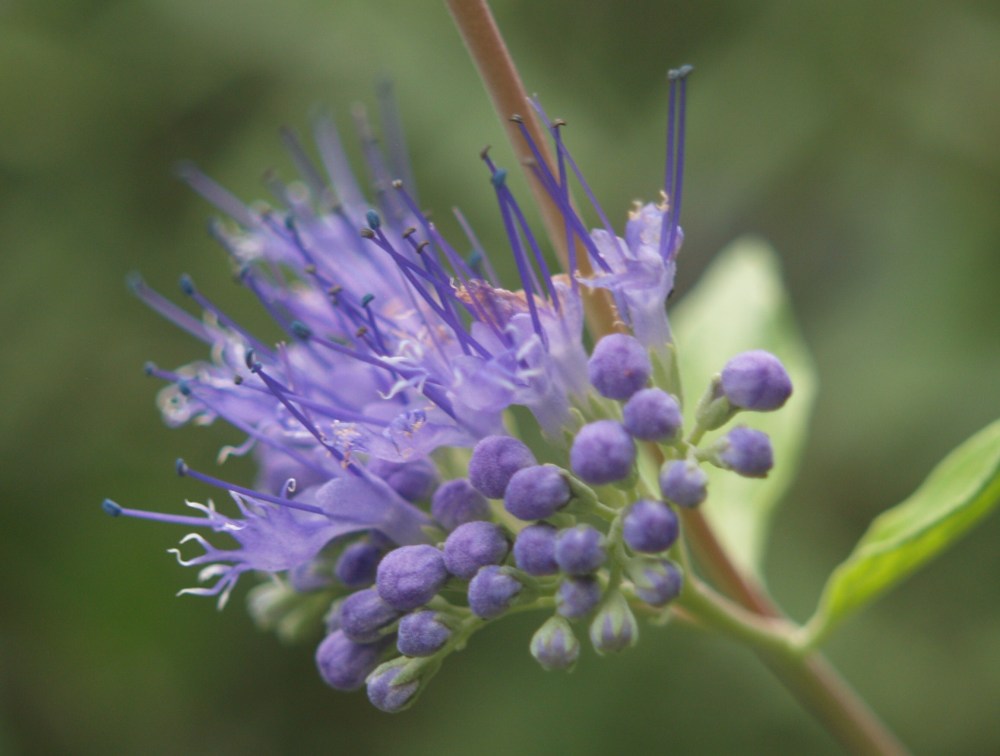
In late August the fruits of the Chinese dogwood (Cornus kousa ‘Galilean’, below) are nearly as plump and juicy as strawberries, though they are partially hidden by the lush foliage that withstands the summer heat far better than our native dogwood. Once ripened, birds abscond with the fruits in a hurry.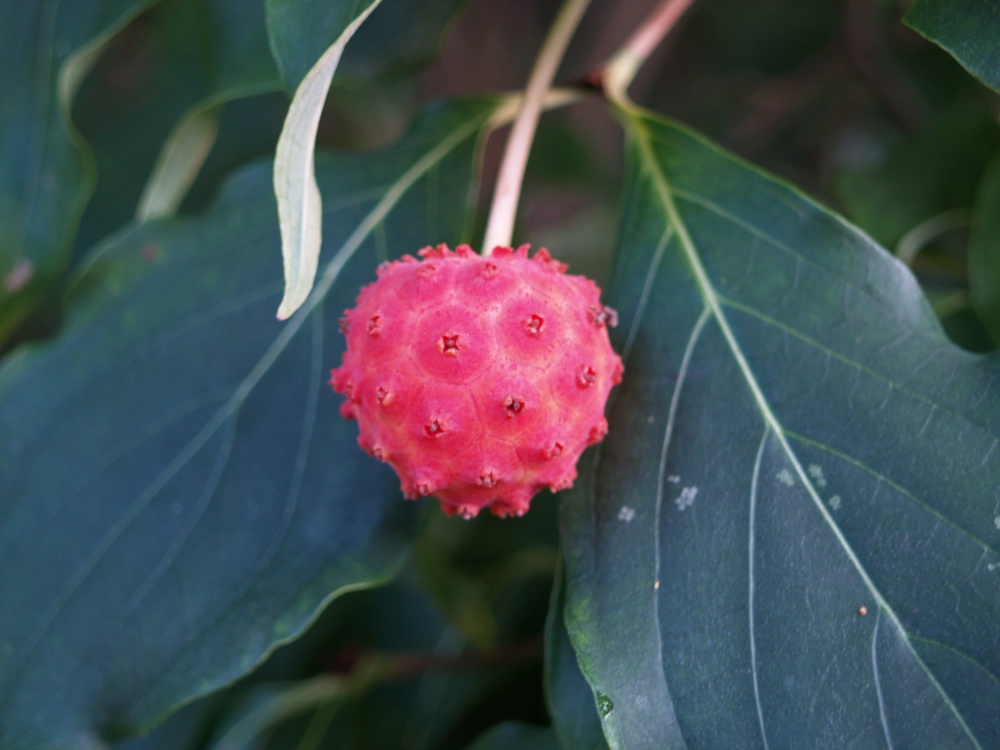
The red pitcher plant (Sarrecenia, below) was slow to grow early in the summer, a result of my fiddling with the edges of the large swimming pond, which added another inch to the water’s depth. I am quite certain that the pitcher plant would prefer the more shallow water level, but there it is, and it seems to have survived my “improvement”.
The pitcher plant is one of the little oddities that are not so obvious as you travel through the garden. It is tucked in a spot of mud between two mossy boulders at the ponds’s edge, and the surrounding growth has made the route to see it treacherous such that the last several feet are most safely approached on hands and knees to avoid tumbling into the pond.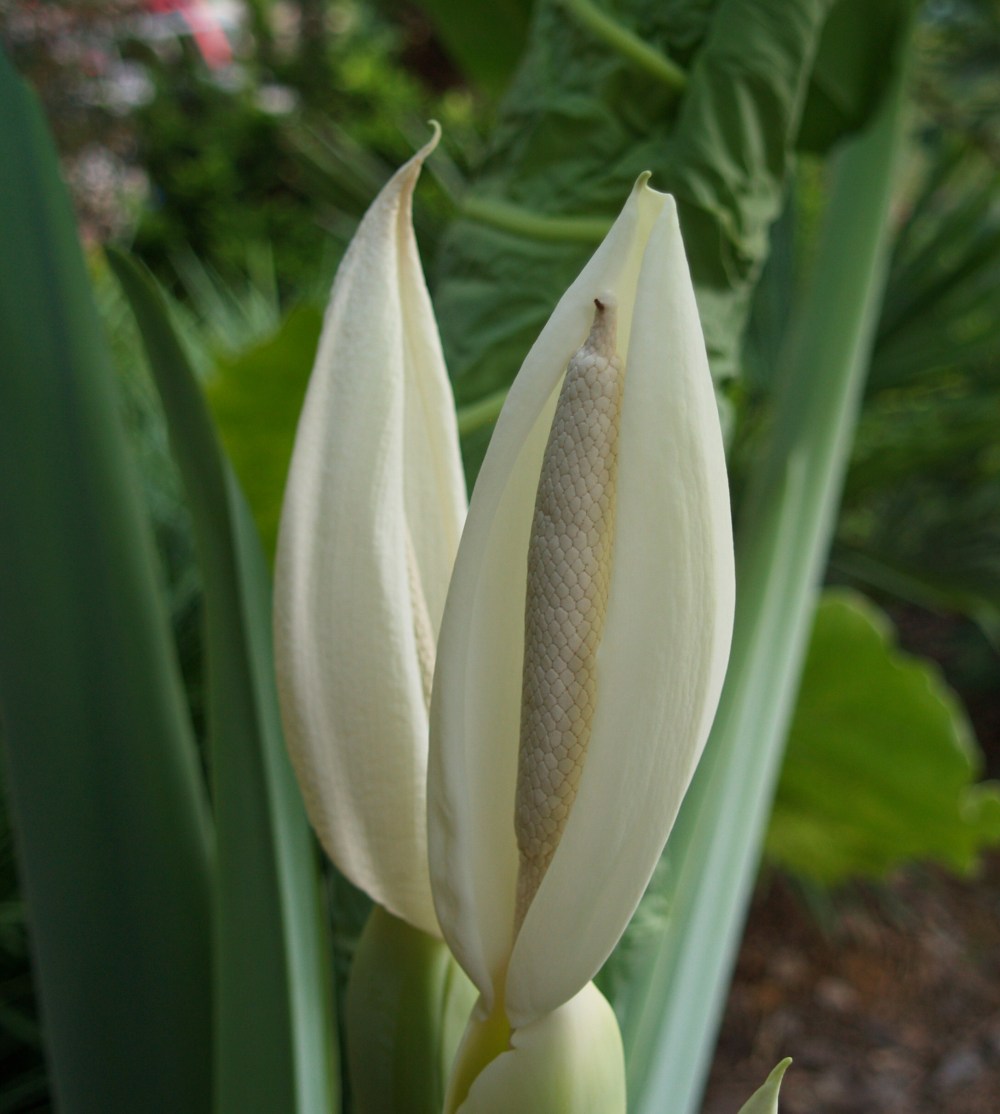
I seem often to be scrambling about on hands and knees, weeding or snooping for a close up of a bug or bloom, and if not I would not have seen the odd flower, then another, and a third, that have appeared under the arching five foot leaves of the humongous elephant ear (Colocasia gigantea “Thailand Giant’, above). Of the dozen or more types of elephant ears in the garden I have seen flowers only on a few, but Thailand Giant is said to bloom more readily.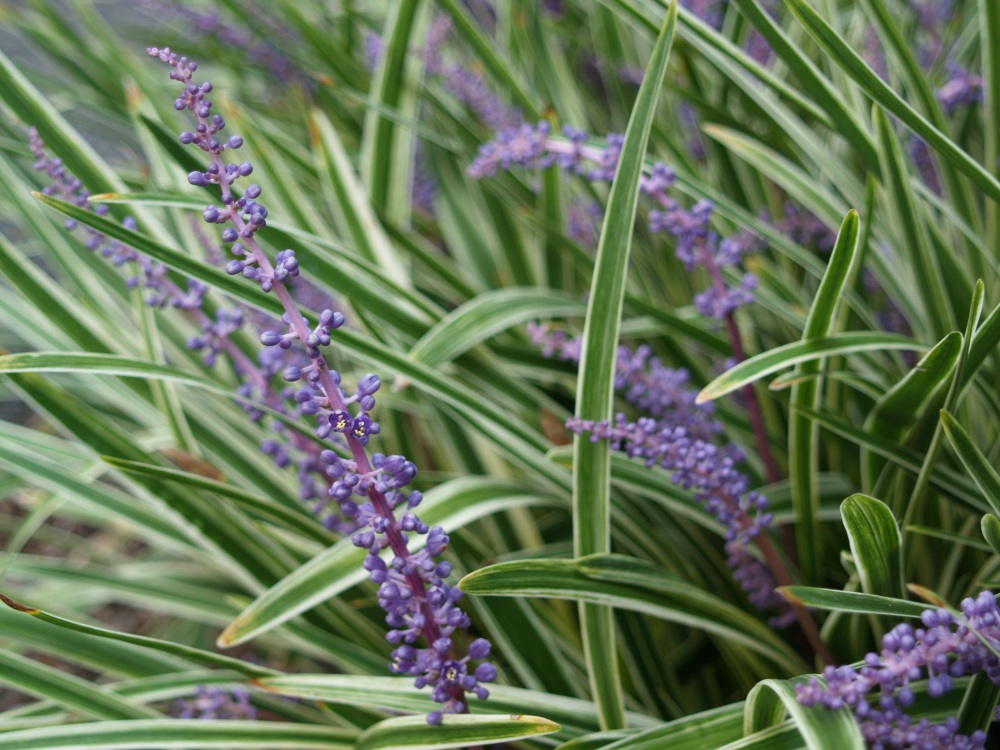
The green and white striped liriope (Liriope muscari variegata, above) is the latest to bloom in the garden, and along with the green leaved Big Blue these liriopes would be quite useful even if they did not flower. The grass-like clumps spread slowly, contrasting with more broad leafed plants at the front of the border and along paths. Liriope muscari should not be mistaken for the thuggish spicata types that romp through open spaces and into the lawn, a plant that my wife has sworn to eliminate from the garden, but one that I am content to allow to spread through some dry, shady out-of-the-way areas where its aggression is appreciated.
I have heard that Japanese spireas (Spirea japonica ‘Little Princess’, above) can seed themselves about, but I’ve not seen that in my garden or in the surroundings. Little Princess blooms off and on through the summer without deadheading, and stays compact without much effort except shearing it to eighteen inches every two or three years.
There are several abelias in the garden, though none of the common, coarse, glossy abelia (Abelia grandiflora). Kaleidoscope, Gold Dust (in bloom above), and Canyon Creek (below) are grown as much for their colorful foliage as for blooms, but also their arching habit is more graceful than the old upright variety.
There are a few plants, and a few patches in the garden that are a bit brown along the edges, but there are more plentiful blooms than will fit in todays entry, so I’ll return in a few days with the blooms of early September.